Shannon Town in Co Clare, which was Ireland’s only planned town in the 20th century, is experiencing a serious identity crisis. In recent years, it has been the focus of not one, or two, but three masterplans for its future development by Clare Co Council.
The first was in 2008, the second in 2012, and the third, now at draft stage, will be completed by the end of this year. To date, nothing from the previous masterplans has ever materalised.
The town was so full of hope and potential when it was devised and created back in the 1960s and 1970s. In 1982, it was officially deemed to be Ireland’s newest town. Four decades on, Shannon Town is stuck in a kind of paralysis.
“The town has no focus and that has been so detrimental for it over the years,” says Derek Clune, who came to live and work in Shannon in 1977, and still lives there. “Shannon is a town of housing estates.”
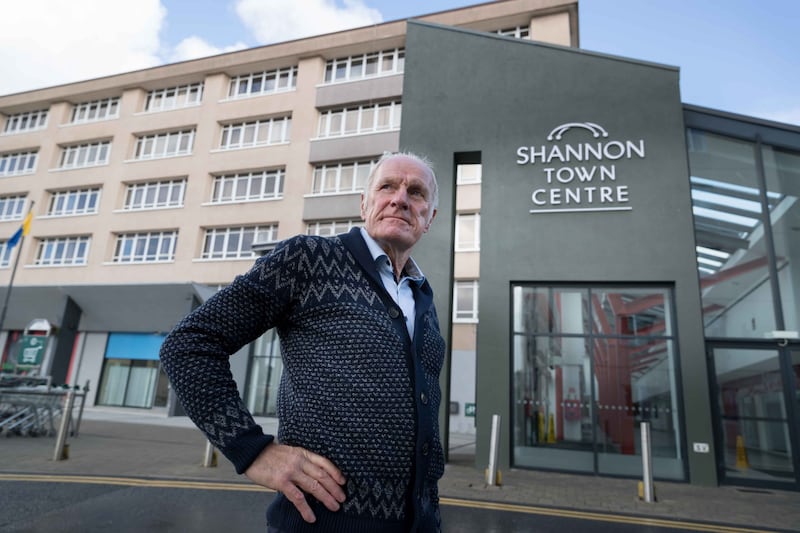
Shannon is a placename that is complicated. It’s probably correct to say that when most people hear the name, they think first of an airport, or a river. They might not get much further than that. The fact is, Shannon is a place with three very distinct and separate identities and communities, although they were not meant to be separate when originally planned.
There’s the airport, where the world’s first Duty Free was established, and which employs some 250 people. There’s Shannon Free Zone, a vast and sprawling industrial complex of factories where about 10,000 people work. Most of these employees commute every day from the wider region (Clare, Limerick, Galway, even Cork). And then there’s Shannon Town with a population of 9,729.
One day earlier this month, I drove off the N18, in search of Shannon Town. First, I wasn’t sure where I was. The sprawl of housing estates extends over a huge footprint that is more suggestive of the outer suburbs of a city than a town of less than 10,000 people.
“Your Everyday Covered,” reads the faded sign for SkyCourt Shopping Centre. The retail centre that is the anchor of Shannon Town is not actually called SkyCourt any more. The complex was bought within the last year for €6 million by the Urban Green development company, headed up by Tom Coughlan. The name has reverted back to Shannon Town Centre, except the branding for SkyCourt remains; on signs and on mats at the entrances to the shopping centre.
The fairest thing to be said about the newly named Shannon Town Centre is that it looks very, very tired. It’s difficult to smarten up the bones of a half-century-old retail development, and it definitely doesn’t happen simply by giving it a new name. I spent an hour or so walking around the complex, and counted some 24 empty or boarded-up units out of about 52 in total.
“There is a lot of retail space here, but nobody wants retail now,” says Brian Lohan, whose auctioneering business occupies one of the units.
Lohan grew up in Shannon. “It was a great place to live, and to grow up in. It was unique in that everyone in Shannon walked to school. But the town is now having an identity crisis.”
Lohan walks me around the shopping centre. Back in the 1970s, it didn’t have a roof. It has since been roofed with glass, and extended. He points to the empty units as we walk and tells me what used to be there.
"That was a sports shop. That was a cafe. That was a shoe shop. That was a diner. That was a jewellers. They're all gone. Tesco pulled out, and Iceland replaced it there. That unit, where Dealz is now, used to be Penney's before they left."
The thing is, the second generation now, the people who grew up here, are still going into Limerick or Ennis to shop and socialise. You would have thought they would be anchored here by now
We walk outside, to the bleak little windswept Town Park, where there is a (locked) oratory at its centre, and six stone benches lined up in a row. This area of the Town Centre complex is dominated by the enormous five-storey vacant office block that was once the headquarters of Shannon Development. Underneath it, at ground level, is the largest vacant unit of the entire shopping centre, the Shannon Knights.
“That was the town’s main meeting place,” Lohan explains. The Shannnon Knights, a long-time landmark restaurant, bar, nightclub and off-licence, is now closed. “There isn’t anywhere here to have a drink or dinner now.”
In a strange reversal of most Irish towns, there is not one bar in or around Shannon Town Centre. The only restaurants are in the two hotels at opposite sides of the dual carriageway on the way in off the motorway, the Shannon Springs and the Oakwood. There is a Daybreak and the Crossroads Tavern in Drumgeely, a housing estate a 25-minute walk from the Town Centre: the Crossroads is the only standalone pub in the entire Shannon Town area.
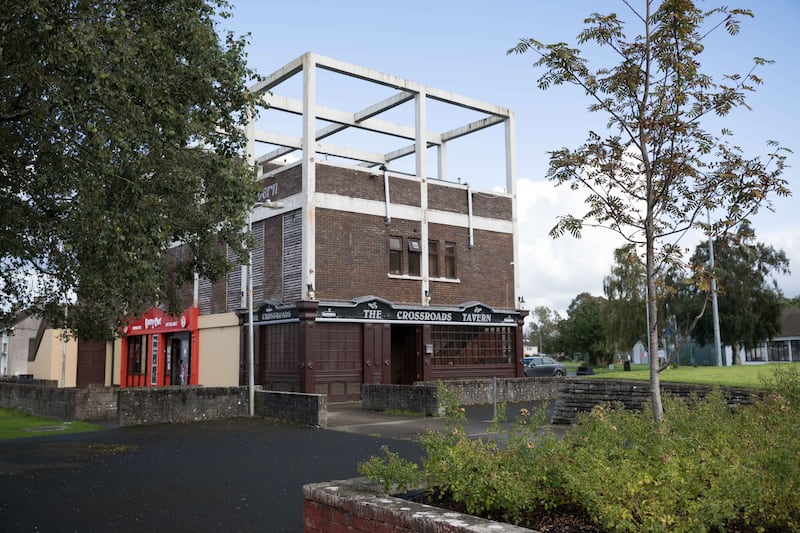
In 1959, the government set up Shannon Development to promote the airport and the wider region. As part of that process, Shannon Town was also planned and built, through the 1960s and 1970s. The first housing estate of Drumgeely was built closest to the airport, and then the others gradually spread eastwards. These housing estates included Cluain Airne, Tradaree, Finian Park, and Cronan Park.
Unlike any other towns at the time in Ireland, Shannon was administered not by the local county council, but by Shannon Development. This remained the case until 2004, when responsibility for the town transferred to Clare County Council. At the time that property transfer was the largest since the foundation of the State; and ever since, according to the people who live there, Shannon has struggled.
Derek Clune is now 64. Like everyone else in the 1960s and 1970s, he came to the new town of Shannon to take up a job and avail of its affordable new housing. Clune’s employer was Standard Steel Press, and he bought a three-bed house in the Cronan estate in 1978 for €6,500. He still lives there.
“When they developed Shannon, they built houses for workers first,” he says. “They forgot about the people who lived here. It was all about employment and the airport, and that legacy lives on, nearly 60 years later. When Shannon Development got round to deciding on building the actual town centre, its idea was a shopping centre.
“Having a private developer run the shopping centre was a huge mistake,” Clune maintains. “That is very detrimental to variety and competition. There was just the shopping centre, and no streetscape, and this was the origin of the town’s problems. What every resident I have ever spoken to over the years wants is a streetscape.”
Everyone who moved to the new town half a century ago was, by definition, from somewhere else. Clune points out that being midway between the established urban centres of Limerick city and Ennis, Shannon people went to shop and socialise there, rather than in their own town.
People are skeptical. It's the third plan the council has come up with, and nothing has yet happened with any of them
“In the evenings, people would go to Bunratty to the Shannon Shamrock [Hotel], or to a pub in Sixmilebridge, and there was no sense of community here. There weren’t those places here to bring people together. The thing is, the second generation now, the people who grew up here, are still going into Limerick or Ennis to shop and socialise. You would have thought they would be anchored here by now. That hasn’t happened.”
There are five primary schools and two secondary schools in Shannon. Those have helped to connect people. But while there are some 50 clubs in the town, there has never been a community centre, or an arts venue, or anywhere to hold public meetings, put on shows, or hold events. The local musical society performs in one of the school gyms.
“There are a lot of voluntary groups, sports clubs, drama, musical societies, but all these groups are doing their own thing in their own little space,” Clune says.
While there is very little in Shannon by way of retail or hospitality, there are the abundant amenities of woods, estuary walks, and many green spaces.
“We need to enhance our green spaces a lot more,” Clune says. “There has been some antisocial behaviour because there are very few outlets for young people. Covid has made that worse. There is a lot of green space that can be used as cover for parties. We have picked up a lot of cans.”
Recently, two community groups in the town have come together to lobby as one for better services, amenities, and social outlets. Clune is the chair of The Love Shannon Community Council. They are fully aware of Clare County Council’s third nascent masterplan for the town.
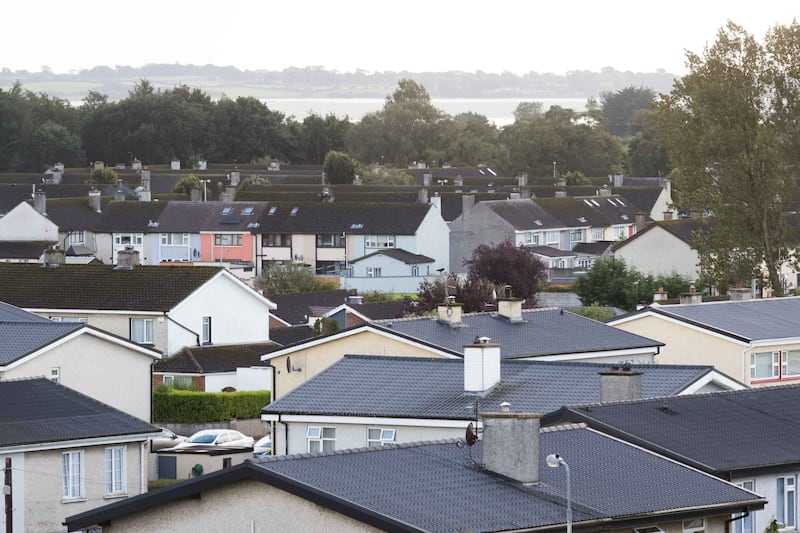
Clune has a copy of this draft plan with him. In it is a clear acknowledgment that the original planning of the town was not successful.
“Shannon Town Centre has been the heart of Shannon Town since the 1970s, but despite its range of retail and community services, it lacks definition and the sense of place found in other Irish towns and villages ... its town centre has never been the source of pride that Shannon deserves.”
Among the proposed new plans are for a shared community, civic and cultural hub; a new Main Street; a more varied retail offering; an expanded green area; new residential properties; and a “refreshed identity for Shannon”. If implemented, it will bring several positive changes to the town.
“People are sceptical,” Clune says philosophically. “It’s the third plan the council has come up with, and nothing has yet happened with any of them.”
When asked why neither the 2008 and 2012 plans for Shannon had been subsequently implemented, Clare County Council had this response. “Shannon Town was included as one of a number of settlement plans in the South East Clare Local Area Plan 2008.” It did not explain why the 2008 plan had not been developed.
In relation to the 2012 plan, which was focused on Shannon Town Centre, the council stated: “This plan was ambitious in scale and detail however in part due to the global downturn and post Celtic Tiger recession was not implemented.”
Of the current third plan, still in draft stage, the council stated: “The purpose of the Town Centre Masterplan is to define the focus for economic, spatial and property development for the entire Shannon Town Centre ... It is anticipated the masterplan will be finalised by end of the year.”
Meanwhile, the other two distinct operations within the Shannon campus – the airport and the Free Zone, further down the N19 – seem to have nothing at all to do with the town whose name they share.
“There is a huge disconnect between the three places,” Clune says. “The people who come to the airport to fly out don’t even know there is a town here. And most of the 10,000 people who work in the Free Zone don’t live here; they commute.”
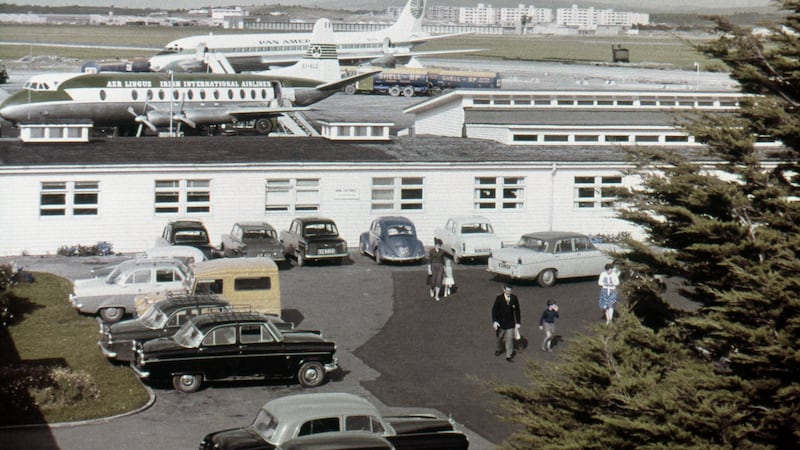
After talking to Derek Clune, I drove what's called "the old road" from Shannon Town Centre to the sprawling industrial park of the Shannon Free Zone. Some 100 companies and factories are based here. The newest and shiniest buildings are Jaguar and Land Rover, located beside a Starbucks.
I spent half an hour or so getting lost driving round the labyrinthine network of roads and roundabouts of this vast – 600 acre – industrial park. Back from the main road, where Jaguar and Land Rover are located, and which is clearly the prime real estate, there are still several original 1960s buildings with their distinctive butterfly roofs. It's like something from the set of a science-fiction movie.
There needs to be more of a mix. The only housing being built is social housing. There is no incentive for people working in the Free Zone or at the airport to live in Shannon
From there I drove to the airport where, that day, eight flights were due in. The car park was about a third full, and a smattering of travellers were waiting at departures.
In 2014, Shannon Airport, Shannon Heritage and Shannon Commercial Properties merged as one, and became the Shannon Group. It can be challenging to keep track of these different entities, which all have similar sounding names; ever-growing branches of the same original tree.
Until 2014, Shannon Development, which built Shannon Town Centre, managed the Shannon Free Zone. Shannon Development was dissolved in 2014. The Free Zone is now part of the Shannon Group and Mary Considine is the group chief executive. I met with her at her office at the airport.
“The airport is very much at the heart of the area,” she says. “We hope to be back to pre-pandemic numbers here by 2024.” In 2019, prior to the pandemic, 29 air services operated from Shannon; they are currently running 18.
Considine, like many of those who work in the airport and in the Free Zone, doesn’t live in Shannon Town. She lives elsewhere in Co Clare. “The town itself has been left behind,” she says. “The new masterplan will address some of those needs.”
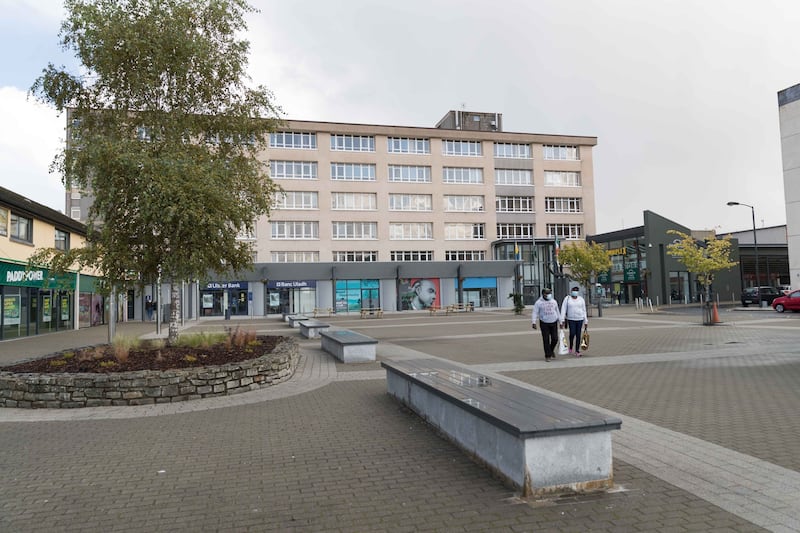
Drumgeely was where the first housing was built in Shannon, close to the airport. Driving around the hilly roads, where estates are located in between several blocks of flats, you can see down to the Shannon estuary from up here.
Derek Barrett, who owns Peach Recruitment in Shannon Town, lives in Drumgeely Hill, in one of some 10 large detached houses. “This was the one of the first estates to be built,” he says. “Ten houses were built for American executives in 1962. They were fancy dan back in the day, with underfloor heating and everything, but feel quite boxy now.”
Barrett came to Shannon from Waterford as a baby in 1967. His parents relocated here because they both got jobs.
“Everything was brand spanking new, every estate had a playground in the middle of it,” he says. “Everyone who arrived in Shannon back then were starting new lives together, in a new town with new jobs. Back then, there was a spark and an energy to make things better for people and to make a new life and home for themselves. It was a great time.”
Barrett, although extremely loyal to his town, as is everyone I speak to who lives in Shannon, has no illusions as to its current shortcomings.
“The town has been neglected. It has decayed in terms of services, amenities, and social infrastructure: it has a very peculiar town centre,” he says. “It is in a bad place, but we are trying to be positive about it. It has been rudderless since Clare County Council took over in 2004, and we feel it hasn’t got the attention it should have.”
It was the best town you could grow up in. There was such freedom, it was safe, there were great schools... Then the developers came in and made a hames of it
He says no new privately owned housing developments have been built in the past 12 years. “There needs to be more of a mix. The only housing being built is social housing. There is no incentive for people working in the Free Zone or at the airport to live in Shannon.
“Business people coming there to work are never shown Shannon as a place they could live; they are always directed out of the town. Back when we moved here, a lot of those executives and senior management lived in the town.”
Darragh O'Connor owns the Texaco station in Shannon. He moved to the town as a child, when his father, Al, got a job as the Town Centre's manager.
“It was the best town you could grow up in,” he says. “There was such freedom, it was safe, there were great schools. The Town Centre was small, but it had some great local shops, locally owned and run. A toy shop, a fruit and veg place, nice clothes shops. Then the developers came in and made a hames of it.”
I ask if he thinks there is a disconnect between the three parts of Shannon: the town, the airport and the Free Zone.
“There is a massive disconnect,” he says. “Ever since 2004, when Clare County Council took over, Shannon has been left behind, and the three different places became less and less connected to each other.
“Everything is fragmented. Before Shannon Knights closed, a few hundred people from the Free Zone would come over and have lunch there every day, for example. Then they might do a bit of shopping. We never see them now, even though the Free Zone is so close by.”
When I have finished talking to O’Connor, I take another walk around the Town Centre, and the adjacent plaza where the oratory and benches are.
There is a trio of bronze sculptures by Joe Neeso on tall stone pillars. They depict wings in various stages of flight. The plaque beside them states: “Marking the 40th anniversary of Shannon Development 1959-1999.”
Five years after these sculptures were installed, Shannon Development was dissolved. Something seems to have flown away from Shannon Town at the same time; some vital spirit. Shannon Town badly needs to find its missing wings again.

















